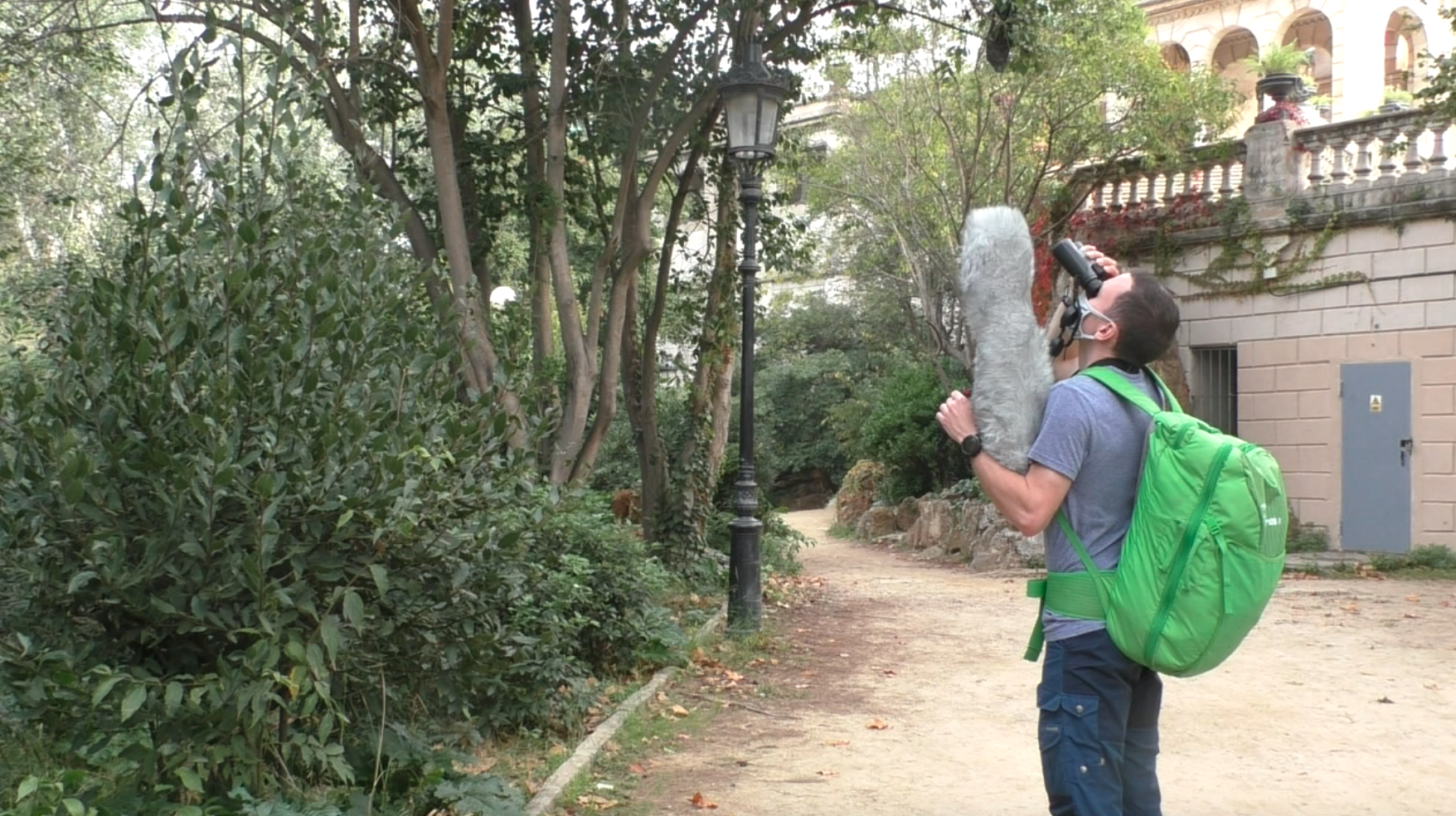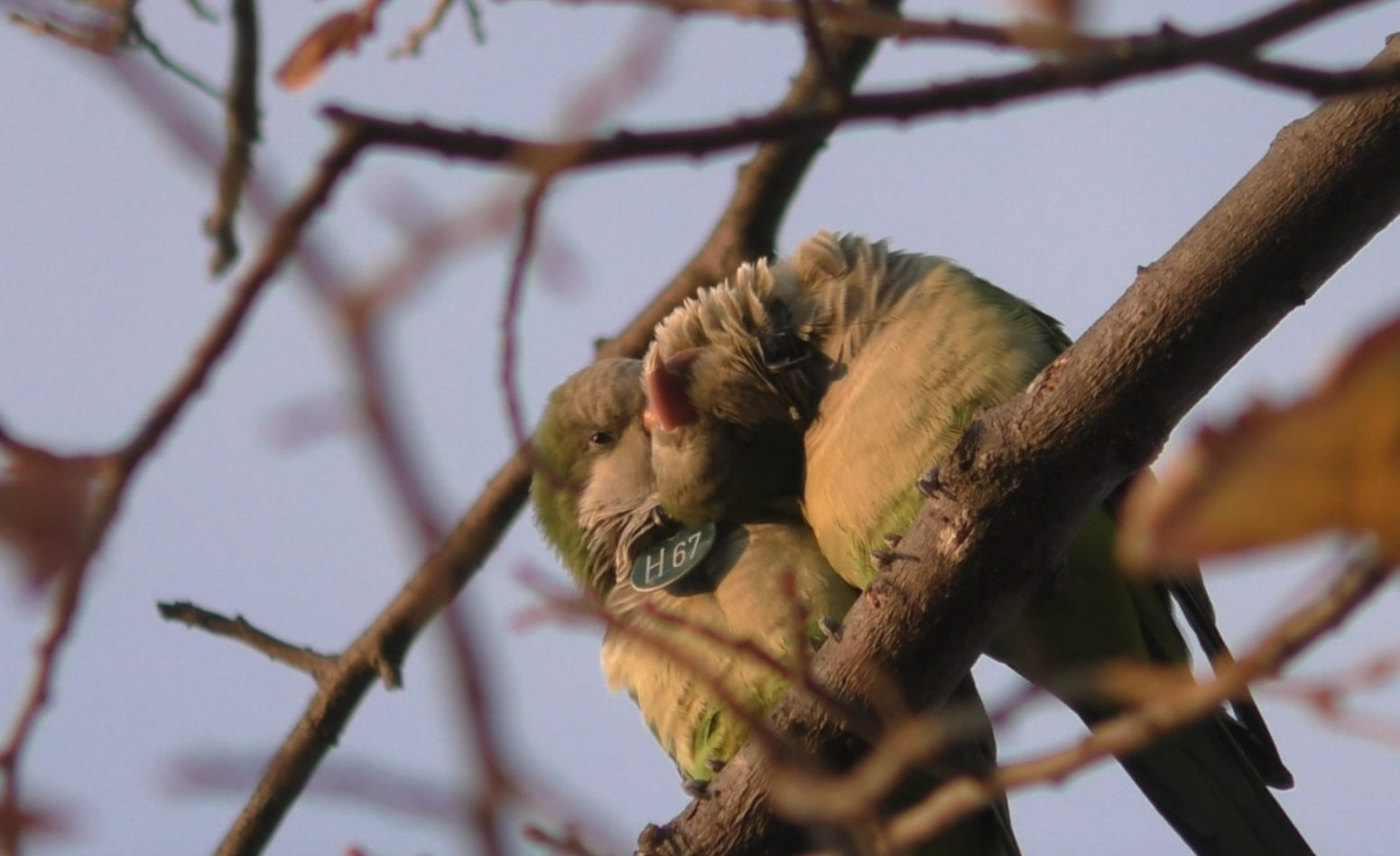About me

Tenure track
I’m currently employed as a tenure track researcher at Ecoscience, Aarhus University, where I work on monitoring bat activity above land and sea. We use machine learning in combination with passive acoustic monitoring and also employ Motus tags to detect individuals directly.
PhD
During my PhD, I was broadly interested in the evolution of complex cognition and culture. More specifically I focussed on the emergence of socially learned vocal behaviours in parrots. I studied vocalisations and social behaviour of the monk parakeet, an invasive parrot in many European cities. I also did comparative work trying to link vocal complexity, social complexity, brain size and longevity across parrots. I was supervised by Dr. Lucy Aplin and Dr. Mary Brooke McElreath.
Our latest work showed a unique voice print for individuals and dialects across the European range of monk parakeets. For the latter we also published a video explaining the results to the general public.
 Tagged monk parakeet preening its partner (that managed to remove its tag) in Ciutadella park, Barcelona.
Tagged monk parakeet preening its partner (that managed to remove its tag) in Ciutadella park, Barcelona.
